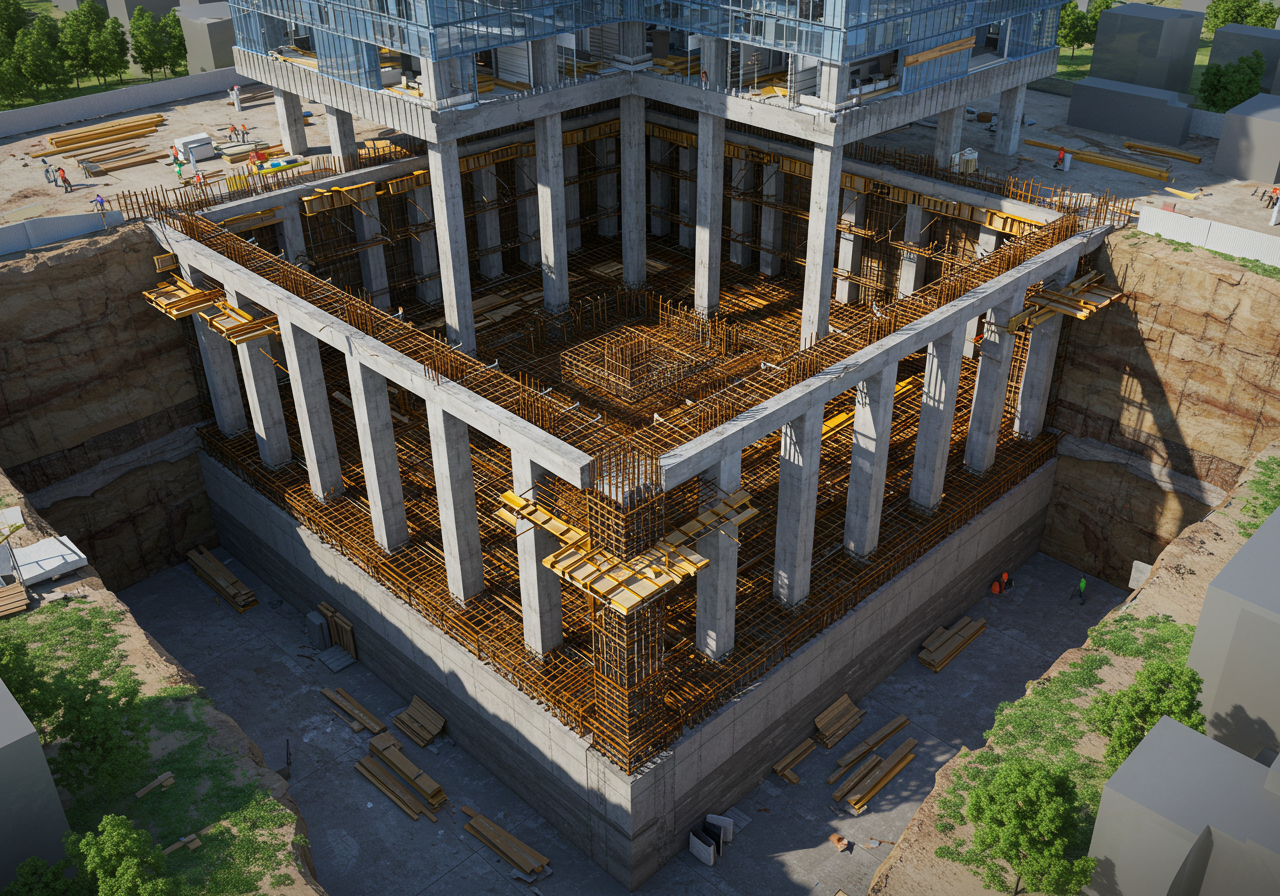Foundation for Skyscrapers: Key Engineering Facts
When you gaze up at the towering silhouettes of New York skyscrapers or marvel at the steel-and-glass giants of Chicago, have you ever wondered—what keeps these mammoth structures standing firm against gravity, wind, and time? The answer lies deep below the surface—in the foundation for skyscrapers. Without it, those gravity-defying marvels would be nothing more than architectural dreams.
Let’s dig deep (pun intended) and uncover the fascinating world beneath these mega structures. Whether you’re just curious or knee-deep in civil engineering studies, this guide is your blueprint to understanding how skyscrapers stand tall and proud.
What Is the Foundation for Skyscrapers?
At its core, a foundation for skyscrapers is the base structure that transfers the massive weight of a skyscraper into the ground. It might not be glamorous like the sleek design of famous skyscrapers, but it’s the unsung hero of high-rise architecture.
Think of it like this:
If a skyscraper is a tree, the foundation is its root system. No matter how majestic the branches look, the tree stands only because of the roots beneath.
Engineers must consider the weight of the building, soil type, groundwater levels, and seismic activity before deciding which type of foundation is ideal.
According to the Council on Tall Buildings and Urban Habitat at SkyscraperCenter, many famous skyscrapers like those in New York and Chicago use deep foundation systems such as caissons and piles to ensure structural stability.
Types of Foundations Used in Skyscrapers
Depending on the location and the structure’s size, different foundation techniques are used. Here’s a table that breaks down the most common types:
Table 1: Common Foundation Types for Skyscrapers
| Foundation Type | Best Suited For | Example Cities |
|---|---|---|
| Shallow Foundation | Small to medium buildings with strong soil | Some Chicago skyscrapers |
| Deep Pile Foundation | High-rises, weak soil, heavy loads | New York skyscrapers, Dubai |
| Caisson Foundation | Very tall buildings on soft or wet soil | Skyscrapers near rivers/lakes |
| Mat (Raft) Foundation | Broad, heavy buildings with spread load | Famous skyscrapers in Asia |
Notice how Chicago skyscrapers often benefit from shallow foundations due to their solid bedrock, while New York skyscrapers—many built near the Hudson River—require deeper, more complex solutions like caissons or piles.
Key Engineering Considerations
So what goes into choosing and designing a foundation for skyscrapers? It’s not just digging a hole and pouring in concrete. Here’s what engineers consider:
- Load Distribution: A single skyscraper can weigh hundreds of thousands of tons.
- Soil Testing: Soil mechanics determine how much weight the ground can bear.
- Wind and Seismic Forces: Earthquakes and high winds create lateral forces that the foundation must resist.
- Settlement: Uneven settling can cause cracks or, in worst cases, collapse.
Let’s look at some comparative data of soil conditions and foundation depth.
Soil Conditions and Required Foundation Depth
| City | Average Soil Strength | Foundation Depth (ft) | Notable Skyscraper |
|---|---|---|---|
| New York City | Moderate to soft | 80–120 | Empire State Building |
| Chicago | Strong (bedrock) | 20–50 | Willis Tower |
| Tokyo | Soft, earthquake-prone | 150+ | Tokyo Skytree |
| Dubai | Sandy, saline soil | 160+ | Burj Khalifa |
Pretty wild, right? The foundation for skyscrapers changes drastically depending on what’s beneath the surface. It’s like building on pudding versus concrete—it takes entirely different engineering methods.
Famous Skyscrapers and Their Foundations
Let’s geek out a bit! Ever heard about the Burj Khalifa’s foundation? The world’s tallest building sits on 192 reinforced concrete piles, each extending over 160 feet deep into the desert soil.
Similarly, the Empire State Building, one of the most iconic New York skyscrapers, has a foundation that includes a network of steel pilings drilled deep into the Manhattan schist.
And the Willis Tower, one of the most recognized Chicago skyscrapers, uses a mat foundation sitting on bedrock only 30 feet below ground. That’s one solid grip!
Why You Should Care About Foundations
You might think, “I’m not an engineer, why should I care?” Well, think of it this way: skyscraper foundations are the literal and metaphorical bedrock of urban architecture. Without solid foundations, we wouldn’t have the city skylines that define our modern world.
And with rising urbanization, especially in seismic or soft-soil areas, understanding the foundation for skyscrapers isn’t just important—it’s critical for safe, sustainable city planning.
FAQs About Foundation For Skyscrapers
-
1. What type of foundation is used for famous skyscrapers like the Burj Khalifa or Empire State Building?
Famous skyscrapers like the Burj Khalifa use deep pile foundations, while New York skyscrapers like the Empire State Building rely on caisson foundations to reach bedrock.
2. Why do Chicago skyscrapers often use shallow foundations?
Chicago skyscrapers are typically built on strong bedrock located close to the surface, allowing engineers to use shallow foundations effectively and cost-efficiently.
3. How do soil conditions affect the foundation for skyscrapers?
Soil strength determines whether a skyscraper needs a shallow or deep foundation. Soft soil, like that beneath many New York skyscrapers, requires deeper support.
4. What engineering factors are considered when designing a foundation for skyscrapers?
Engineers analyze soil type, load weight, wind, and seismic risks before choosing the right foundation for famous skyscrapers in cities like Chicago and New York.
5. How deep are the foundations of the tallest skyscrapers in the world?
Some of the tallest and most famous skyscrapers, such as those in Dubai and Tokyo, have foundations extending over 150 feet deep to ensure stability and safety.
Conclusion: The Strength Beneath the Skyline
The next time you’re walking through Manhattan or looking up at the towering skyline of Dubai, remember—it’s not just what’s above ground that’s impressive. The real power lies beneath. The foundation for skyscrapers is a complex marvel of engineering, blending soil science, architecture, and ingenuity to make the impossible possible.
Whether you’re a student, a curious mind, or a city dweller who loves urban architecture, this knowledge gives you a new lens to view the concrete jungles we call home.
Custom Message: Now that you’ve explored the foundation for skyscrapers: key engineering facts, take a moment to appreciate the ground beneath your feet—because every great height begins with a solid foundation.







Post Comment